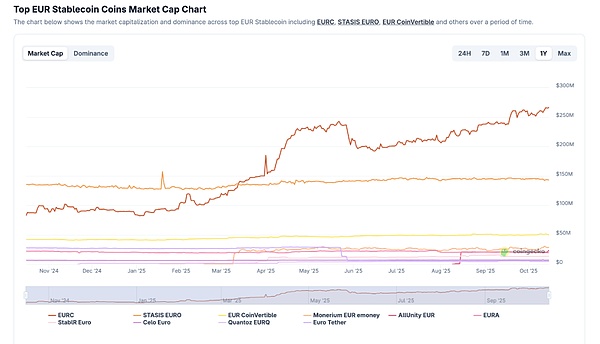The French banking group ODDO BHF has launched the euro-backed stablecoin EUROD, which is a compliant digital version of the euro under the new EU Regulation on Markets in Crypto-Assets (MiCA) framework.
This move by the 175-year-old bank highlights how traditional banks are gradually expanding into the regulated blockchain finance sector.
Managing over €150 billion in assets, ODDO BHF stated that EUROD will be listed on the Madrid-based exchange Bit2Me.
Bit2Me, supported by Telefónica, Banco Bilbao Vizcaya Argentaria (BBVA), and Unicaja Banco, has completed registration with the Spanish National Securities Market Commission (CNMV) and is one of the first exchanges authorized under MiCA, allowing it to expand its business across the EU.
ODDO BHF is collaborating with infrastructure provider Fireblocks to handle custody and clearing matters, with EUROD issued on the Polygon network for faster and lower-cost transactions. The token is fully backed by euro reserves and is subject to external audits.
Leif Ferreira, CEO of Bit2Me, stated that this listing "builds a bridge between traditional banks and blockchain infrastructure" in the context of Europe embracing regulated digital assets.
The MiCA regulation, which came into effect this year, requires stablecoin issuers to maintain a 1:1 reserve and ensure redeemability, while enforcing strict governance and transparency standards.
The launch of EUROD will test the practical effects of MiCA in coordinating digital asset regulation across the EU.
European Central Bank (ECB) President Christine Lagarde recently warned that foreign stablecoins lacking "robust equivalent regulatory mechanisms" could trigger a reserve run in the eurozone.
In a letter to the European Parliament, she urged lawmakers to limit stablecoin issuance to EU-authorized entities, citing the collapse of TerraUSD as an example of the risks posed by unregulated projects.
According to CoinGecko data, the market capitalization of euro-pegged stablecoins has doubled this year, with Circle's EURC dominating the market, reaching a market cap of approximately $270 million.

Under the MiCA framework, the demand for bank-issued stablecoins like EUR CoinVertible from Société Générale is relatively low.
ECB advisor Jürgen Schaaf believes that Europe must accelerate its pace of innovation, or it may face the risk of "erosion of monetary sovereignty."
The European Systemic Risk Board (ESRB) has warned that a multi-issuer model for the same stablecoin, involving both EU and non-EU companies, could introduce systemic risks and requires enhanced regulation.
Despite these warnings, the regulatory clarity brought by MiCA has still fostered market competition:
Société Générale's FORGE division has launched the euro stablecoin EURCV; Deutsche Börse has partnered with Circle to incorporate EURC and USDC into its trading system.
Nine European banks, including ING, CaixaBank, and Danske Bank, have formed a Dutch alliance planning to issue a euro stablecoin compliant with MiCA requirements by 2026, with Citigroup subsequently joining the alliance, expecting to launch related stablecoins in the second half of 2026.
Meanwhile, ten G7 banks, including Citigroup and Deutsche Bank, are exploring the issuance of multi-currency stablecoins to modernize settlement processes and enhance global liquidity.
Compared to the over $160 billion market cap of dollar-pegged stablecoins, the total market cap of euro-backed stablecoins remains small, at less than $574 million.
Regulators believe that if transparent management can be achieved, euro-denominated digital assets will help enhance financial sovereignty.
For ODDO BHF, EUROD is a strategic initiative to attract institutional clients through compliance and credibility.
The development of this stablecoin will depend on the acceptance of payment providers and investors who are seeking reliable euro-denominated alternative assets in the digital economy.
免责声明:本文章仅代表作者个人观点,不代表本平台的立场和观点。本文章仅供信息分享,不构成对任何人的任何投资建议。用户与作者之间的任何争议,与本平台无关。如网页中刊载的文章或图片涉及侵权,请提供相关的权利证明和身份证明发送邮件到support@aicoin.com,本平台相关工作人员将会进行核查。




